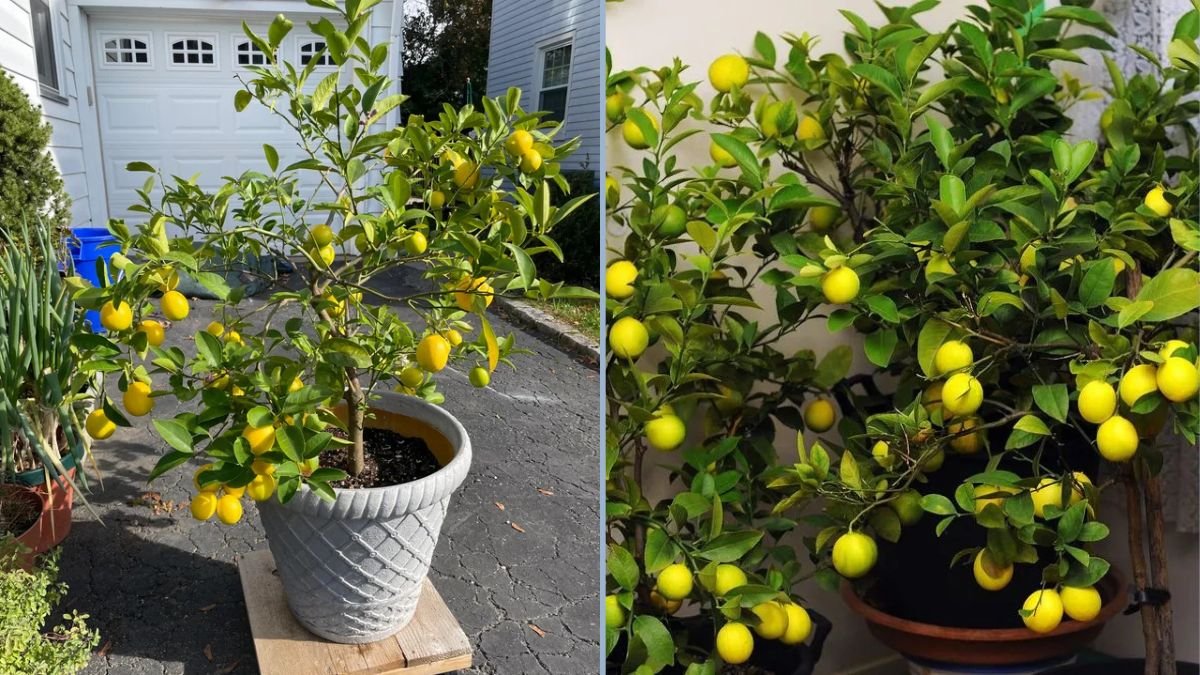Meyer lemons are a favorite among home gardeners and citrus enthusiasts alike. Known for their sweet, aromatic flavor, thin skin, and slightly less acidic taste than regular lemons, Meyer lemons are perfect for fresh cooking, cocktails, and desserts. Growing them in containers is an excellent solution for those with limited space, patios, or cooler climates, allowing gardeners to enjoy homegrown lemons year-round.
This guide will cover everything you need to know about growing Meyer lemons in containers, from choosing the right container and soil to planting, care, and early maintenance.
Why Choose Meyer Lemons?
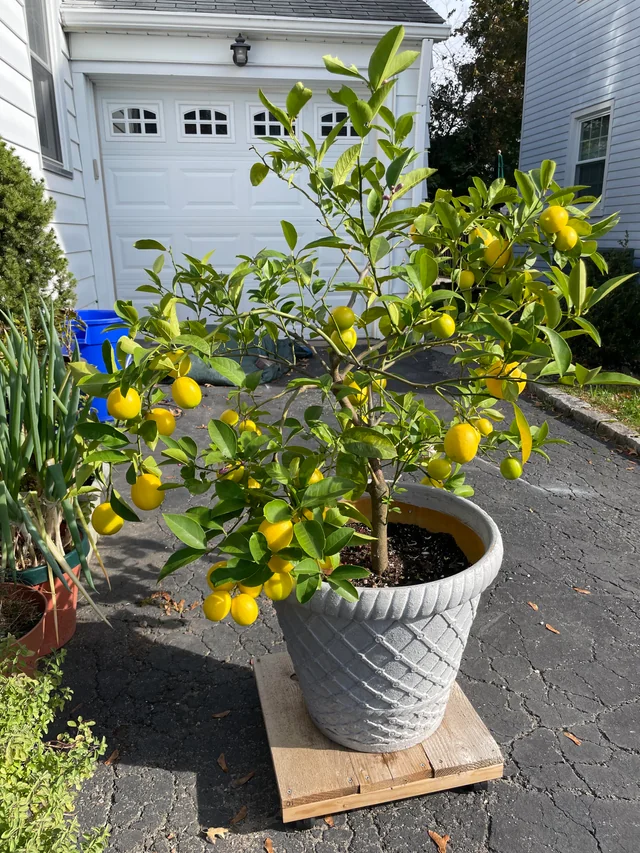
Meyer lemons are prized for several reasons:
- Sweet, Aromatic Flavor: Sweeter and less acidic than traditional lemons, perfect for culinary uses.
- Compact Growth: Suitable for container gardening and small spaces.
- Year-Round Interest: Evergreen foliage and fragrant blossoms make it ornamentally appealing.
- Continuous Production: With proper care, Meyer lemons can produce fruit throughout the year.
- Ease of Use: Thin-skinned and easy to peel, with a bright, sunny aroma.
Growing Meyer lemons in containers gives gardeners the flexibility to move the tree indoors during winter or place it on a sunny patio, maximizing both convenience and productivity.
Selecting the Right Container
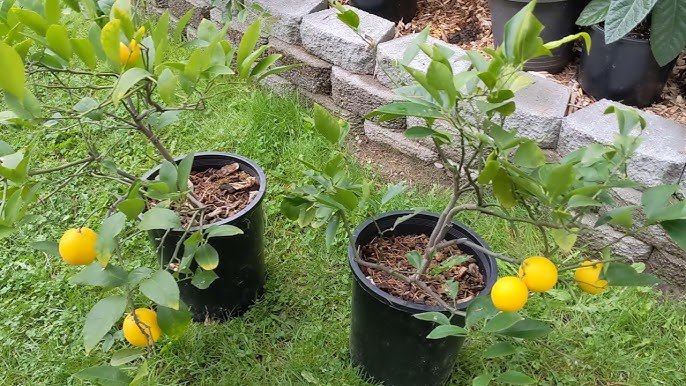
The right container is crucial for a healthy Meyer lemon tree.
Container Size
- Start with a 12–15 inch diameter pot for young trees.
- Upgrade to a 20–24 inch container as the tree matures, allowing roots to expand.
- Ensure the pot has adequate drainage holes to prevent waterlogging.
Material
- Plastic pots: Lightweight and retain moisture well.
- Terracotta or ceramic pots: Porous, allowing soil to breathe but require more frequent watering.
- Consider mobility: If you live in a cold climate, choose pots that can be moved indoors during frost.
Choosing the Right Soil
Meyer lemons thrive in well-draining, nutrient-rich soil.
Recommended Soil Mix
- Use a high-quality potting mix designed for citrus or indoor plants.
- Amend with perlite or sand to improve drainage.
- Mix in organic compost to provide nutrients for healthy growth.
Good drainage is essential because citrus roots are prone to rot if left in standing water.
Planting Your Meyer Lemon Tree
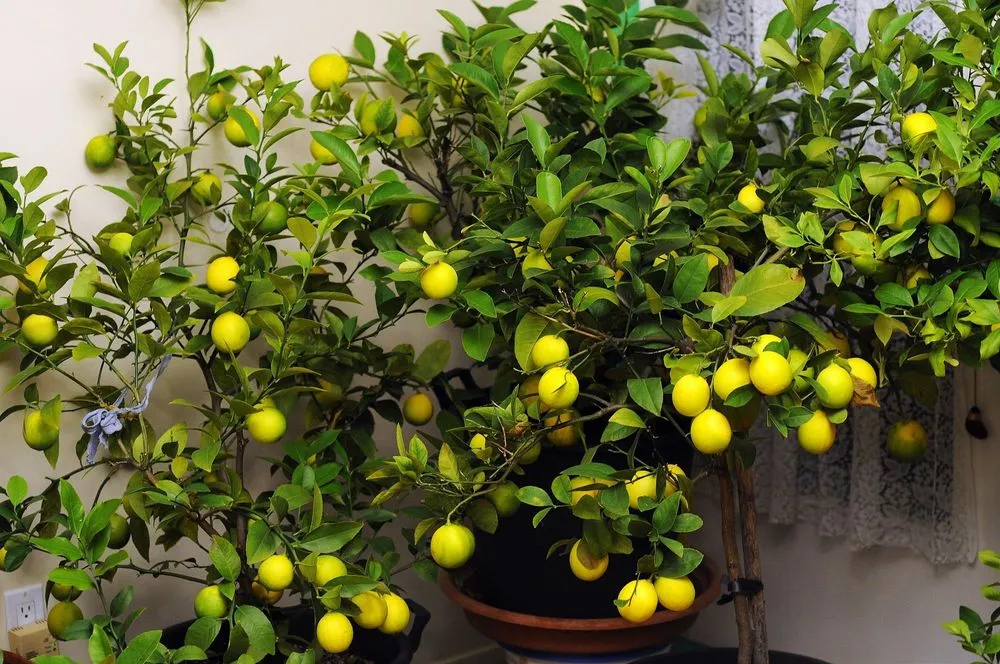
Planting Meyer lemons in a container properly sets the stage for healthy growth and abundant fruiting.
Step-by-Step Guide
- Prepare the Container: Place a layer of gravel or small rocks at the bottom for drainage.
- Add Soil: Fill the container halfway with potting mix.
- Position the Tree: Remove the tree from its nursery container and gently loosen the roots. Place it in the center of the pot.
- Backfill: Add potting mix around the root ball, firming gently. Avoid covering the graft union if the tree is grafted.
- Water Thoroughly: Water until the soil is evenly moist and water drains from the bottom.
- Mulch (Optional): Add a thin layer of mulch to retain moisture and regulate temperature, keeping it away from the trunk.
Sunlight Requirements
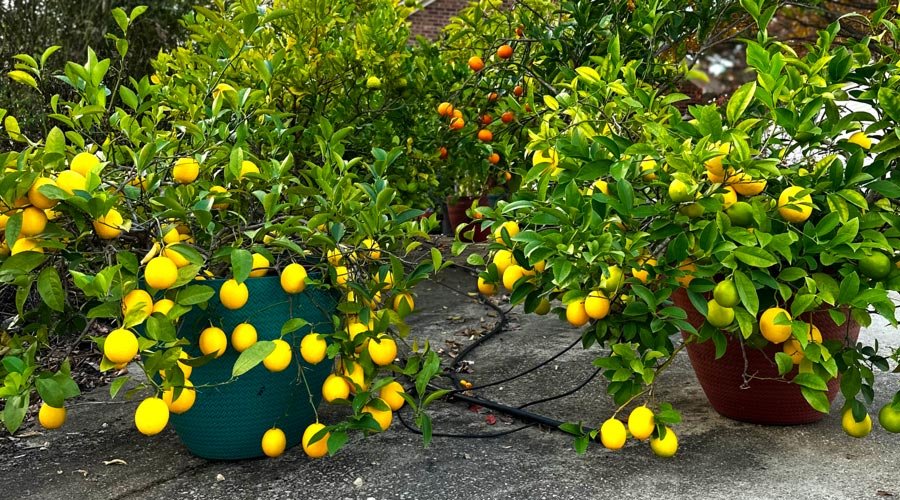
Meyer lemons require full sunlight for optimal growth.
- Place your container in a location that receives 6–8 hours of direct sunlight daily.
- If growing indoors, choose a south-facing window or use supplemental grow lights.
- Insufficient sunlight can lead to leggy growth and reduced fruit production.
Watering and Drainage
Proper watering is critical for Meyer lemons in containers:
- Young Trees: Water frequently to keep soil consistently moist but not waterlogged.
- Established Trees: Allow the top 1–2 inches of soil to dry between waterings.
- Check Drainage: Ensure excess water can escape through the container’s holes to prevent root rot.
- Signs of Overwatering: Yellowing leaves or soft roots indicate water stress.
Fertilization for Container-Grown Meyer Lemons
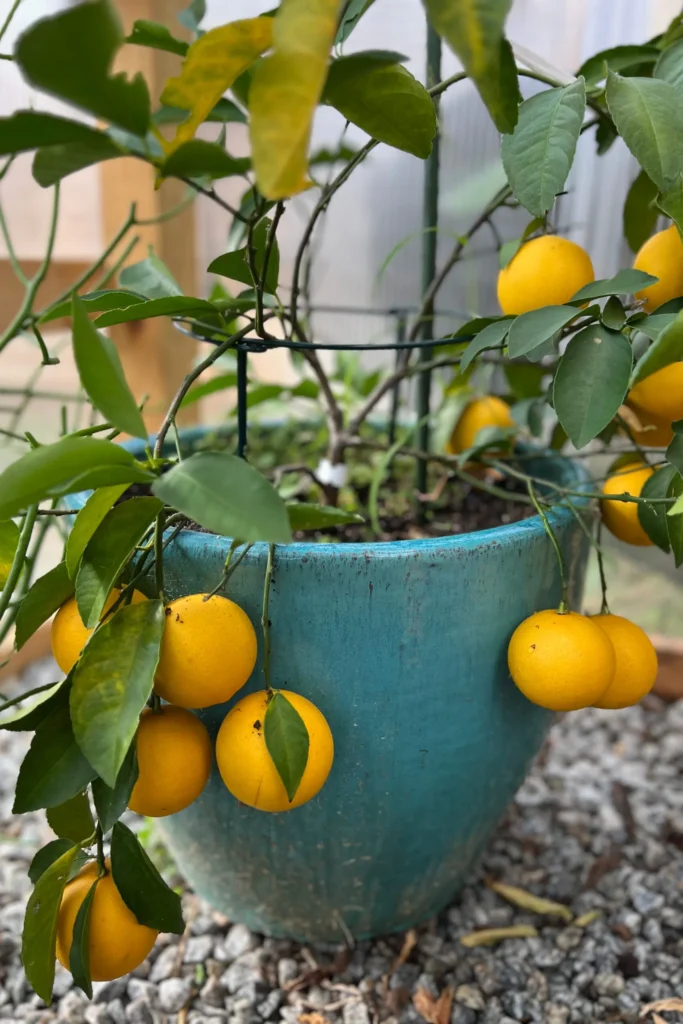
Container-grown Meyer lemons require regular feeding to remain healthy and productive:
- Use a citrus-specific fertilizer with micronutrients like magnesium, iron, and zinc.
- Fertilize every 6–8 weeks during the growing season (spring through early fall).
- Reduce feeding during the winter months when growth slows.
- Follow package directions carefully; over-fertilization can burn roots and damage foliage.
Pruning Your Container Meyer Lemon
Pruning helps maintain a compact shape and encourages healthy fruiting:
- Remove dead, damaged, or crossing branches.
- Pinch back new shoots to encourage bushy, balanced growth.
- Avoid heavy pruning, as Meyer lemons set fruit on new growth and excessive cutting can reduce yield.
Regular light pruning keeps your container tree manageable and productive.
Pest and Disease Management
Even container-grown Meyer lemons are susceptible to pests and diseases:
Common Pests
- Aphids: Small insects that feed on new growth; treat with insecticidal soap.
- Spider Mites: Cause stippling and leaf discoloration; spray with water or miticide.
- Scale Insects: Appearing as small bumps on stems; treat with horticultural oil.
Common Diseases
- Root Rot: Caused by overwatering; ensure proper drainage.
- Citrus Canker: Causes lesions on leaves and fruit; remove infected areas.
- Leaf Spot: Fungal infections; manage with proper spacing and airflow.
Regular monitoring and prompt intervention ensure healthy foliage and fruit development.
Pollination and Flowering
Meyer lemons produce fragrant white blossoms that attract pollinators:
- Indoor trees may require hand-pollination using a small brush to transfer pollen.
- Flowers usually bloom in spring and can continue intermittently throughout the year in warm conditions.
- Proper pollination ensures fruit set and larger, juicier lemons.
Harvesting Your Meyer Lemons
Meyer lemons mature in 6–9 months, depending on climate and care.
Signs of Ripeness
- Color: Bright yellow with a slight orange tint.
- Firmness: Slightly soft to the touch, but not mushy.
- Ease of Picking: Gently twist or cut the fruit from the branch.
Unlike some citrus, Meyer lemons retain their flavor after harvesting, but are best enjoyed fresh for maximum sweetness.
Enjoying Your Homegrown Meyer Lemons
Meyer lemons are versatile and delicious:
- Fresh Juice: Add to cocktails, lemonades, and salad dressings.
- Cooking and Baking: Ideal for desserts, marinades, and sauces.
- Preserving: Make marmalade or candied peel.
- Aesthetic Use: Use slices to decorate dishes or beverages.
Growing your own lemons adds fresh, vibrant flavor to your kitchen and offers the satisfaction of homegrown produce.
Tips for Container Success
- Rotate Containers: Turn pots periodically to ensure even sunlight exposure.
- Winter Protection: Move potted trees indoors or to a protected area during frost.
- Check Soil Regularly: Containers dry out faster than garden soil; monitor moisture consistently.
- Repot Every 2–3 Years: Refresh soil and provide room for root growth.
- Mulch and Fertilize: Retain moisture and provide nutrients for consistent growth.
By following these tips, your container-grown Meyer lemons will remain healthy, productive, and full of flavor.
Conclusion
Growing Meyer lemons in containers is a practical and rewarding way to enjoy fresh, aromatic citrus even in small spaces. From selecting the right container and soil to proper watering, fertilization, and pest management, each step is essential to ensure a healthy, productive tree.
Meyer lemons not only provide delicious fruit but also add fragrant blossoms, lush green foliage, and year-round ornamental beauty to your garden, balcony, or patio. With patience and consistent care, container-grown Meyer lemons can produce bountiful harvests that bring the taste of fresh, sun-kissed citrus to your home.
In Part 1, we covered planting and early care. Stay tuned for Part 2, where we’ll dive into advanced care techniques, pruning for fruiting, and maximizing your lemon harvest.
